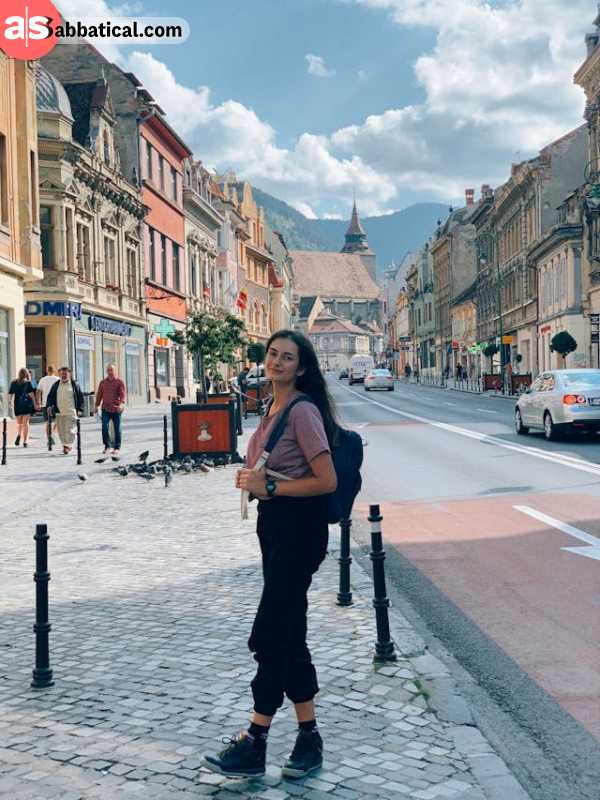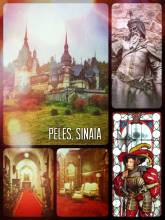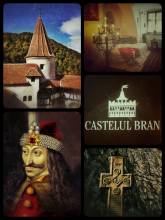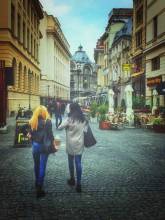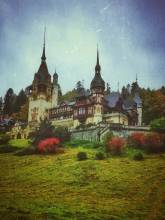5 Places to Explore Romania's Rich Cultural Heritage
Of all the off-the-beaten path destinations in Europe , Romania
, Romania sits proudly on the top 3 of the most underrated. Though famously known as the home for Dracula’s Castle, this Hollywood-inspired touristy tag does no justice to the country’s rich cultural heritage.
sits proudly on the top 3 of the most underrated. Though famously known as the home for Dracula’s Castle, this Hollywood-inspired touristy tag does no justice to the country’s rich cultural heritage.
Historically and geographically, Romania has been at the crossroads of three major empires: the Ottoman in the South, the Tarist (Russian) in the East and the Habsburg-Hungarian in the West. So the main historical and cultural attractions are closely tied to neighboring influences, a long series of battles and changes in power.
So let’s have a look at some of the most representative locations for Romanian culture and history. Who knows, you may even find yourself checking flights to visit Romania after reading this article.
1. Ruins of Dacian Fortresses
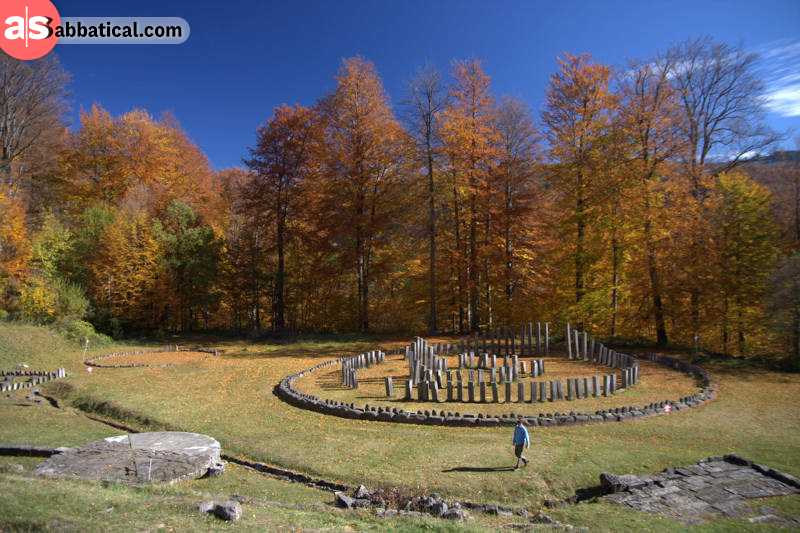
Located in a rough, rather inaccessible part of the South-Western Romanian Carpathian Mountains, the sites of the six Dacian Fortresses now in ruins are probably the most historically complex landmarks you can visit - and the most mysterious ones too.
The Dacians were the original settlers of these lands and their citadels represented the Dacian Empire stretching over an area of 500 square kilometers. They were built strategically to protect the inhabitants and Dacia’s capital, Sarmizegetusa Regia.
Shaped in the murus dacicus style, a walk in their ground will teleport you in the 1st century B.C. when they were supposedly built. The fortresses depict a unique combination of military and religious architectural styles. The relics evidence the intricacy of the constructions, and the time that’s passed while leaving them almost intact demonstrates the techniques used between the classical era and the European Iron Age. Andesite and limestone were transported over long distances to strengthen the strongholds.
Leveraging the landscape’s natural feats, Sarmizegetusa, the capital of Dacia, was also protected by a labyrinthine system which was an incredible feature for those times.
As the Roman Empire under Emperor Trajan expanded along the shores of the Danube River, a confrontation was inevitable. The battles occurred at the end of two brutal wars in 101-102 and 105-106 A.D.
The battle of Sarmizegetusa in 105 A.D. stands as one of the most impactful events in the Dacian ancestors’ history, finalizing with the suicide of their last great king, Decebal. He died before being captured, while his army of 20,000 men are all said to have fallen in battle. For this ultimate sacrifice, the Dacians are seen in Romanian history as mythical heroes embodying courage, strength and honor.
Eventually the Dacian empire was conquered and became a Roman province. The population mingled and civilization elements were borrowed. The result of this process over the next several centuries is the formation of the Romanian nation, culture and people. The population spread over what is present day Romania.
Sarmizegetusa Regia is the only citadel that survived the Romans wars as the other five were burned to ashes. A Roman garrison improved the remaining structure and extended it to its current size.
In 1999 the ruins of the Dacian Fortresses became a UNESCO World Heritage Site. Five fortresses are located in Hunedoara Country, whereas the last, Căpâlna, resides in Alba County.
The surrounding areas showcase the most intricate Dacian living complex accommodating dwellings, workshops, capturing installations and distributing potable water. The difficulty in implementing such features in a mountainous region is why the settlements were included in the UNESCO patrimony.
Do not confuse them with Ulpia Traiana Sarmizegetusa, the settlement the Romans built after seizing Dacia located nearby. Given their low accessibility, these historical sites are best visited with a guide who can also give you more insights into the history and culture of our Dacian ancestors’ as well as describe what you’re looking at.
2. Sighisoara Citadel – a lesson of resistance
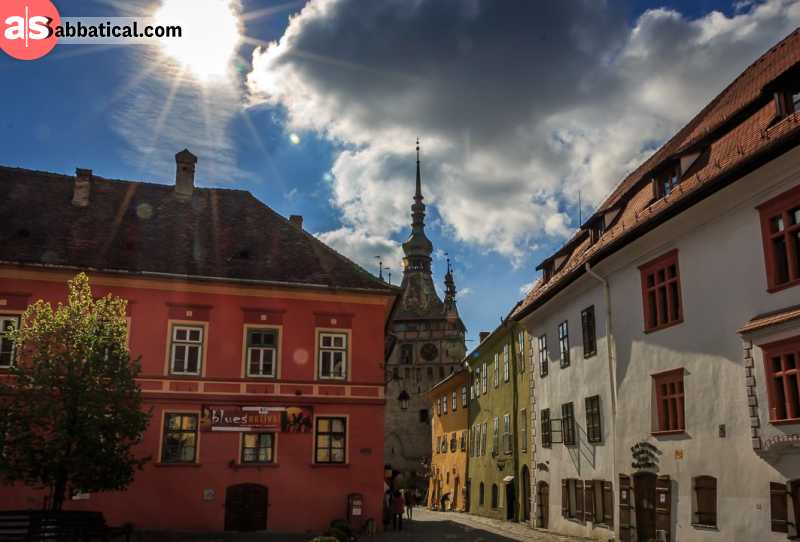
Built atop a hill in the heart of Transylvania in the 12th century, Sighisoara Citadel is perhaps the most representative landmark of the Saxons from Western Europe who colonized this area.
who colonized this area.
Sighisoara Citadel was mentioned in literature around 1280, but the settlement existed long before the site. Back then, it carried the terminology of “Castrum Sex (Fort Six)” and received the mention of “Schespurch” by the end of the century. It’s around this time that the King of Hungary promised the German-speaking Saxons lands, privileges and rights if they moved here to defend the far Eastern borders of the Hungarian Kingdom against foreign invaders.
promised the German-speaking Saxons lands, privileges and rights if they moved here to defend the far Eastern borders of the Hungarian Kingdom against foreign invaders.
And so the Saxons did. That is why Sighisoara Citadel resembles small towns and fortresses found in Germany . A monastery was built on the highest hill at the request of the Dominican monks. The citadel and surrounding area quickly grew, with trades and crafts such as shoemaking, tailoring, painting, weaving, and locksmithing spreading throughout.
. A monastery was built on the highest hill at the request of the Dominican monks. The citadel and surrounding area quickly grew, with trades and crafts such as shoemaking, tailoring, painting, weaving, and locksmithing spreading throughout.
If you visit this famous Romanian tourist site you’ll see how the Saxon influence remained until this day. Most locals - who still live in the citadel - also speak German, cook Saxon recipes and have a way of being that is reminiscent of Saxon lifestyle.
Many tragedies and dramas surround this citadel, like the Mongol invasion, fires, witch trials, rebellions, and executions, following a period around 1601-1676 when conflagrations, plagues, thefts, bloody wars, and natural disasters marked its history.
Few may know, but Sighisoara is claimed to be the birthplace of Vlad III (Vlad the Impaler), or more widely known, Dracula – the historical frightening figure who made Transylvania famous across the borders thanks to Bram Stoker’s book.
Although many get attracted by the Game-of-Thrones-like history surrounding the place, there’s more to visit in this charming town. Head to the UNESCO Historic Center which offers glimpses into the region’s cultural evolution and medieval history. And go up to the Clock Tower to get a view of the entire area.
The citadel hosts multiple festivals and events throughout the year, including the March International Blues Festival and the May vampire-themed International Arts and Film Festival. For history buffs, there’s the Sighisoara Medieval Festival, simulating medieval battles in July, and for a German twist, the Night of Lights festival is organized around November - December.
3. Voronet, the most famous of the Painted Churches of Bucovina
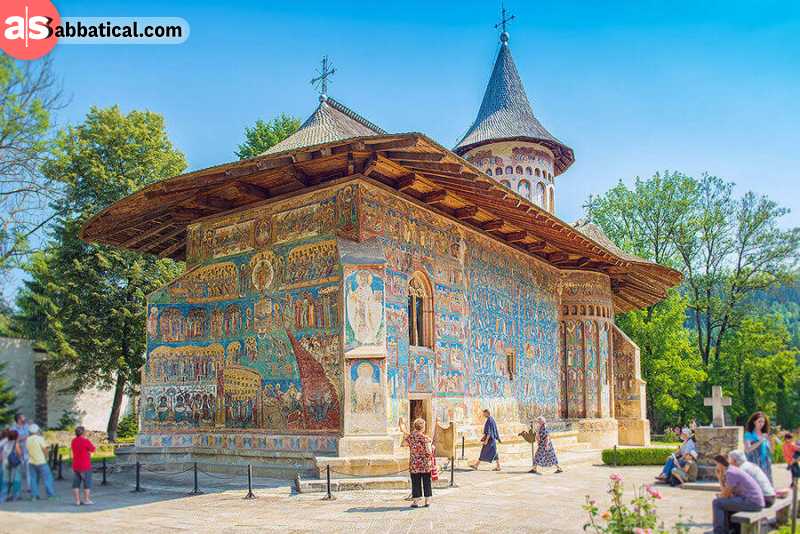
Bucovina, the history-rich region in the Northern part of Moldavia, is home to the renowned painted monasteries included in UNESCO heritage.
The monasteries’ facades depict scenes of saints exhibiting their lifestyles or martyrs’ poignant deaths’ representation. Of the eight monasteries, one stands out as the most famous in Bucovina: Voronet Church, also known as the Sistine Chapel of the East.
It was built in 1488 by a famous ruling prince of Moldavia, Stephen the Great or Stephen III, an important Romanian historical figure. He erected the monastery to commemorate a massive victory over the Ottomans with whom the Romanians were in constant conflict, and to praise God for the numerous other triumphs against the Turks and Tatars.
He won an astonishing thirty-four out of thirty-six battles with them and ranks among the first to have scored a life-or-death triumph over them at Vaslui. After this victory, he received the recognition of the “true Champion of Christian Faith” from Pope Sixtus IV, a former Papal States ruler and head of the Catholic Church.
Voronet was built in less than 120 days and the walls’ exteriors were elaborately painted with what is now considered a masterpieces of Byzantine art.
The fresco on the back wall of the church depicts the Biblical scene of Judgement Day in such a detailed way that even scholars who spent weeks studying still find new details when looking at it again.
But perhaps what makes this fresco and Voronet most famous among the painted churches, and indeed among all churches in Romania, is the fact that the blue paint used to depict this scene has stayed the same despite being over 500 years old. Time showed little signs of passing through - in stark contrast to the paintings of the other churches.
Romanians are Orthodox people and quite religious too, to the point of superstition, especially in rural areas. So you can imagine why Voronet gained a reputation as being a ‘miracle of God.’
If you decide to visit, don’t forget that this is a spiritual site and a monastery in service. So remember to be respectful and not whip out your selfie stick!
4. Alba Iulia Citadel, the largest in Romania
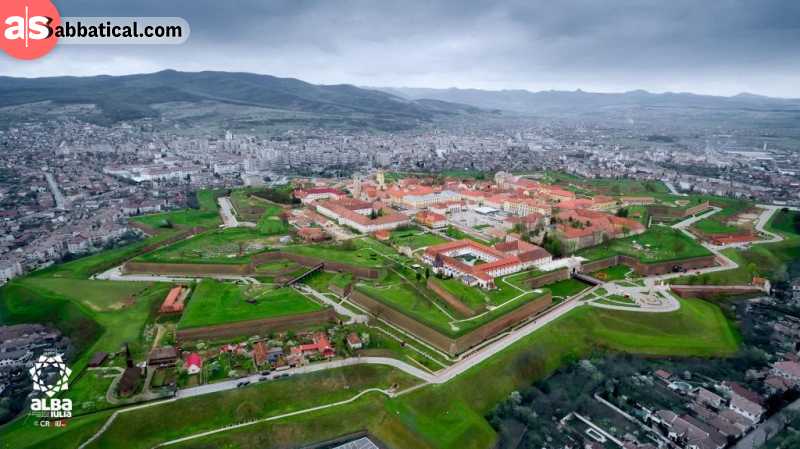
Alba Iulia Citadel is known as Romania’s spiritual capital since this is where the Great Union of 1st of December 1918 took place. It’s when the regions of Transylvania, Basarabia (present day Republic of Moldova ) and other smaller provinces with a majority Romanian population united with the Kingdom of Romania (then formed of the historical regions of Wallachia and Moldova).
) and other smaller provinces with a majority Romanian population united with the Kingdom of Romania (then formed of the historical regions of Wallachia and Moldova).
This had been a lifelong dream of the Romanian people for more than 400 years. 1 December is also the country’s National Day.
After having conquered the Dacians, the Romans saw a moat with great strategic value for the surrounding area, so they set up headquarters for their castrum here and called it Alba Carolina fortress.
But it wasn’t until 1715 that the fortress was turned into the citadel it is today at the order of Emperor Charles VI of the Habsburg Empire.
The citadel was a star-form fortification with six ravelins and seven bastions serving as a “safety enclosures”, transversed by vaulted galleries delineated by deep moats. Works lasted until 1738 when the impressive seven-star shape citadel became one of the most well-defended strongholds in Transylvania.
The primary purpose was - as you can imagine - for military defense. The bastion system, the artillery box that equipped the area, and the large number of troops inside the fortress speak to that.
Even if it went through an assault, the citadel would not fall. 8,000 Hungarian soldiers surrounded the stronghold in 1849 without any success.
Inside the citadel though, many Baroque buildings were erected, including a church, university, and official meeting hall. This is where the governor of Transylvania would take refuge after all.
Fast forward to today, and the citadel was transformed into an open-air space for hosting concerts, cultural events, and performances of international artists and famous Romanian figures.
To date, it remains one of the most emblematic Vauban bastion strongholds in Europe and the largest citadel in Romania, with over 2000 years of history waiting to be discovered.
5. Revolution Square in Bucharest: where democracy began
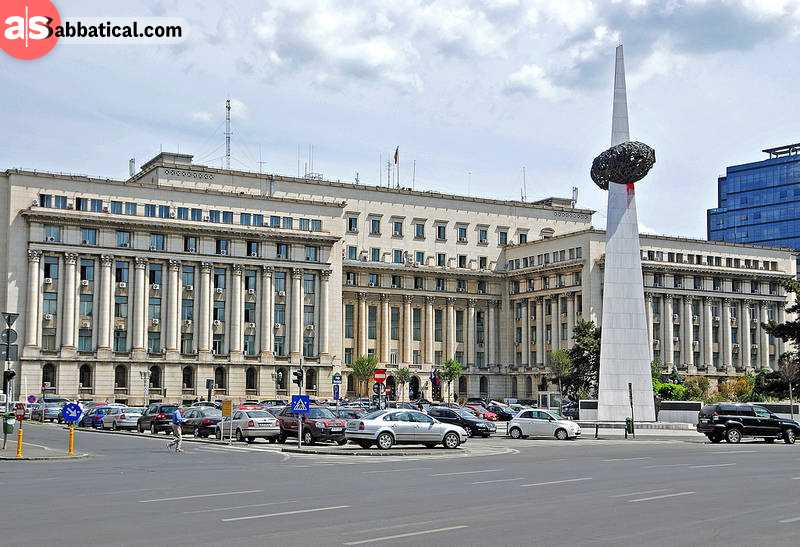
Our last cultural landmark on the list is also the most ‘recent’ historical addition, but not less important.
Revolution Square in Bucharest received its name since this is where the anti-communist revolution of 1989 started. The events that unfolded here are widely seen as a turning point in Romania’s history.
On 21 December 1989 the Romanian communist dictator Nicolae Ceausescu was addressing a large crowd gathered in the square from the balcony of the communist party headquarters. On 16 and 17 December there had been an uprising in the city of Timisoara on the other side of the country, so he was trying to reaffirm his grip and strength.
But the crowds, discontent with poor living conditions and lack of basic food and necessities started booing him. This was the first time this ever happened and the moment was captured on video.
Ceausescu was surprised and without words. Within 30 minutes the crowds started chanting against him and the regime, and the army violently intervened to calm the spirits. The Ceausescu couple fled by helicopter but were quickly captured at a military base. Following a summary trial, they were executed on 24 December.
The end of Ceausescu’s regime paved the way for the long transition towards a democratic state with a liberal, free-market economy.
The surprising unity, courage and determination the Romanian people showed on that fateful day, after 42 years of hardline communist life, is what makes Revolution Square one of the most important spots in Romanian history today.
To commemorate the events of those days, and the victims that gave their lives in the name of freedom, the Rebirth Memorial was erected. It’s such a distinct - and abstract - monument it’s hard to miss, and undoubtedly one of the must visit places in Bucharest.
Conclusion
Besides the above, there are many other sights, medieval castles - hello Dracula Castle - and landmarks representative of our country culture and history. But the best way to experience all this is ‘on site’ - so I hope I made you curious.
Marius Iliescu is the founder of Romanian Friend, a one-stop shop website with travel inspiration, tour ideas and practical info for those planning to visit Romania. His mission is to make sure people experience the best of his country while supporting responsible, inclusive tourism that helps local communities.


